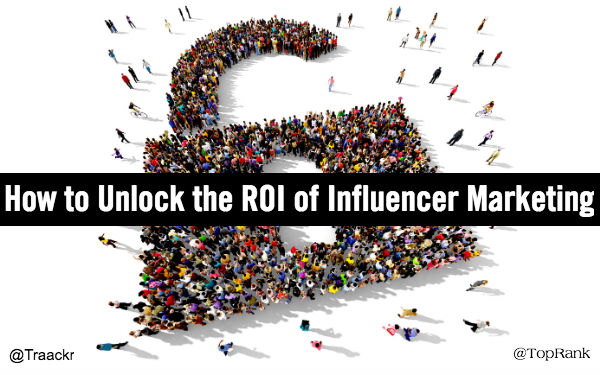
Influencer marketing gained substantial attention and momentum amongst marketers in 2016. Judging by the start of this year, it will be an even hotter topic in 2017. But for all the potential of adding influence to the marketing mix, there are also significant challenges.
With pure pay-to-play and one-off campaign practices distracting marketers from finding the true value of influencer relationships, misconceptions remain.
To bring clarity to the hype, our content marketing agency, TopRank Marketing, along with influencer relationship management software company Traackr, teamed up to investigate how the practice of influencer marketing is evolving within leading enterprises around the world. We surveyed 102 brand strategists and marketers from companies that include American Express, 3M, and Microsoft. We also commissioned Brian Solis, principal analyst at Altimeter Group, to analyze the data and outline what’s working with current influencer marketing practices, what’s failing, and, most importantly, to predict their evolution.
The result is the report “Influence 2.0: The Future of Influencer Marketing.”
This article will highlight some of the most compelling findings from that research and what they mean to senior marketers.
The Influencer Marketing Conundrum
Our research found that 43% of companies surveyed are still experimenting with influencer marketing, and 28% involve influencers only at the campaign level. Incredibly, 57% are managing their entire influencer marketing programs manually. Many companies report small influencer budgets relative to the rest of the marketing mix, with only a 10% share of budget. Furthermore, 50% currently allocate less than $100,000 annually.
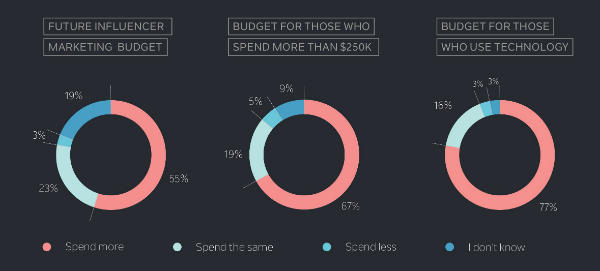
This data demonstrates an untapped potential for enterprise organizations, with influencer marketing still in the early stages of adoption and with low-level resource investment.
One-off, short-term, and transactional influencer programs are failing to deliver the opportunity inherent in “always-on” strategic programs that live beyond a single promotion. The report identifies this shortsighted view as a fundamental failure that hinders performance and prevents influencer marketing from becoming a strategic investment at the board level. By tapping strategic consulting resources and moving to an always-on program focus, enterprise organizations can develop and manage mutually beneficial relationships with influencers that can impact purchase decisions and activate multiple moments of truth across the entire customer journey.
Looking forward, the data indicates a readiness among senior executives for more strategic influencer relations programs. Nearly three-quarters (71%) of brand marketers rate influencer marketing as a strategic or highly strategic marketing category, while 83% of respondents cited “identifying and building one-on-one relationships with industry key influencers” as a top marketing priority.
A Promising Future for Influencer Marketing
CMOs have plenty of reasons to be optimistic about influencer marketing. Fifty-five percent of marketers surveyed said they plan to spend more on influencer marketing in the coming year; for those already investing more than $250,000 annually, this percentage jumps up to 67%. The number further increases to 77% for those using influencer marketing technology. While 24% of companies are currently running an always-on influencer program, many CMOs are missing out, with only 5% implementing integrated influencer activities across all functions.
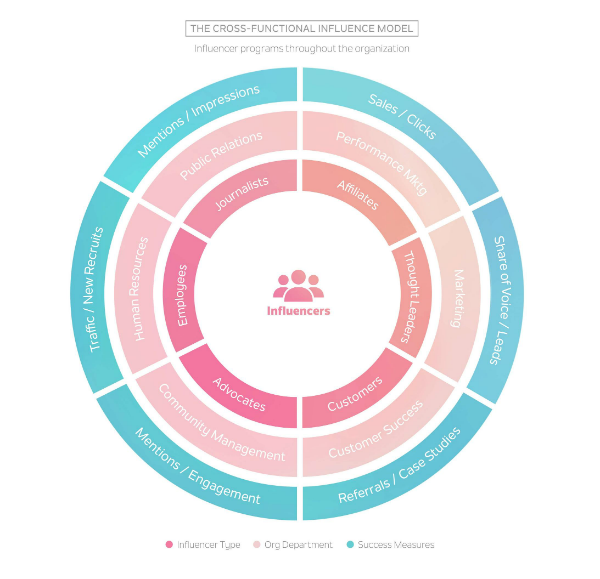
The report also shows that working with influencers is expanding within the enterprise. Half of all respondents stated that four or more departments are engaged in an integrated influencer practice, and 80% indicated more than three. Fifty-seven percent of respondents said they believe influencer marketing will be integrated into all marketing activities in three years, and almost half believe working with influencers will become a cross-functional discipline that will expand beyond marketing.
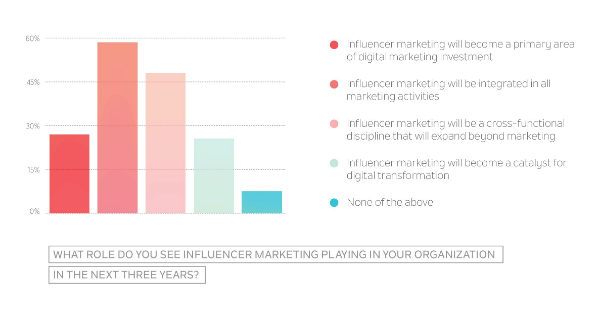
In addition, the role of influence is now expanding to support new areas beyond marketing, including sales, support, and loyalty programs. The majority (94%) of marketers said they would like to explore how influence can improve brand advocacy, 92% want to use it to expand brand awareness, 88% want to reach new highly targeted audiences, 86% to want achieve increased share of voice, and 74% want to improve sales conversion.
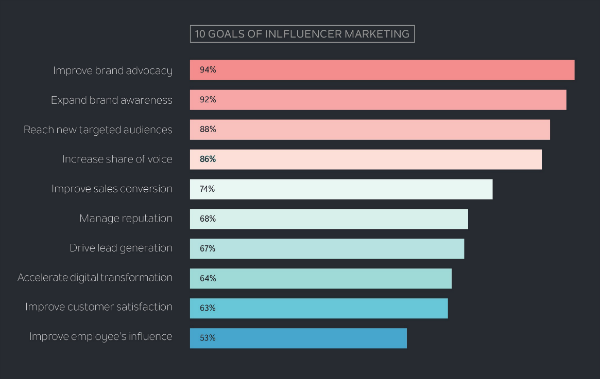
Introducing Influence 2.0
In the report, Solis calls for a maturation of the practice to “Influence 2.0.” Only through an upgrade in its definition, justification, methodologies, and metrics can enterprises deliver on the promise of influencer programs to humanize the brand, he pointed out. A strategic and always-on approach to influence enables true customer-centricity by placing customer experience at the center of enterprise business strategy.
To help make influencer integration a reality, Solis mapped out a future vision and introduced a new business model that unifies the disparate organizational functions that encompass relationship-driven marketing activities, including brand, PR, AR, customer and employee advocacy, social media, and digital. In this model, influencers can play a role in each moment of truth in the customer journey through content, engagement, and community.
Solis also emphasizes that influencer marketing must be an investment priority in its own right, rather than an enhancement to existing advertising, paid endorsements, or PR programs.
Unlocking Influence 2.0
Drawing from the research and Altimeter’s analysis, evolving the role of influence in the enterprise requires a more human approach, with empathy and customer-centricity at its center. By engaging influencers in authentic, long-term relationships and creating value within the relationships between influencers and their communities, CMOs can impact sales, satisfaction, retention, and overall customer experience.
Evolving from a short-term, transactional approach to influencer engagement toward a more strategic and relationship-based strategy that values the mutual benefit of content means influencers, peers, intent, and experiences are aligned throughout the customer journey. Development of an integrated influencer marketing strategy with the right partner, along with a meaningful investment in a strategic technology platform the manages influencer relationships, is essential. With these strategic consulting and platform resources, ongoing programs and long-term relationships can be managed and scaled, cross-functional collaboration can be enabled, and impact before, during, and after transaction can be tracked and measured effectively.
A big thanks to Delphine Reynaud, Pierre-Loic Assayag and the Traackr team as well as Brian Solis for all the work that went into the research and analysis of this very important topic. We’re really just at the cusp of what influencer relationships can do to better attract, engage and persuade in our digital marketing and communications and this research helps give marketers confidence in a more strategic approach to influencer ROI.
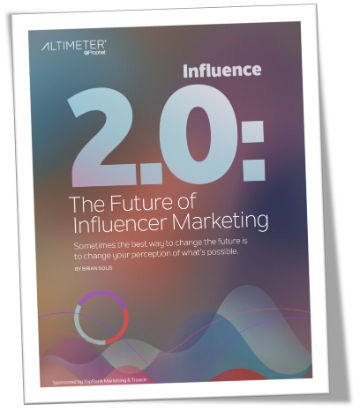
Download the Influence 2.0: The Future of Influencer Marketing report here.
P.S. If you would like to dig even further into the topic of Influencer Marketing ROI, be sure to watch for the webinar Ann Handley of MarketingProfs and I are presenting later this month, February 28th: The No B.S. Guide to Influencer Marketing ROI.
Note: a version of this article originally published on CMO.com


